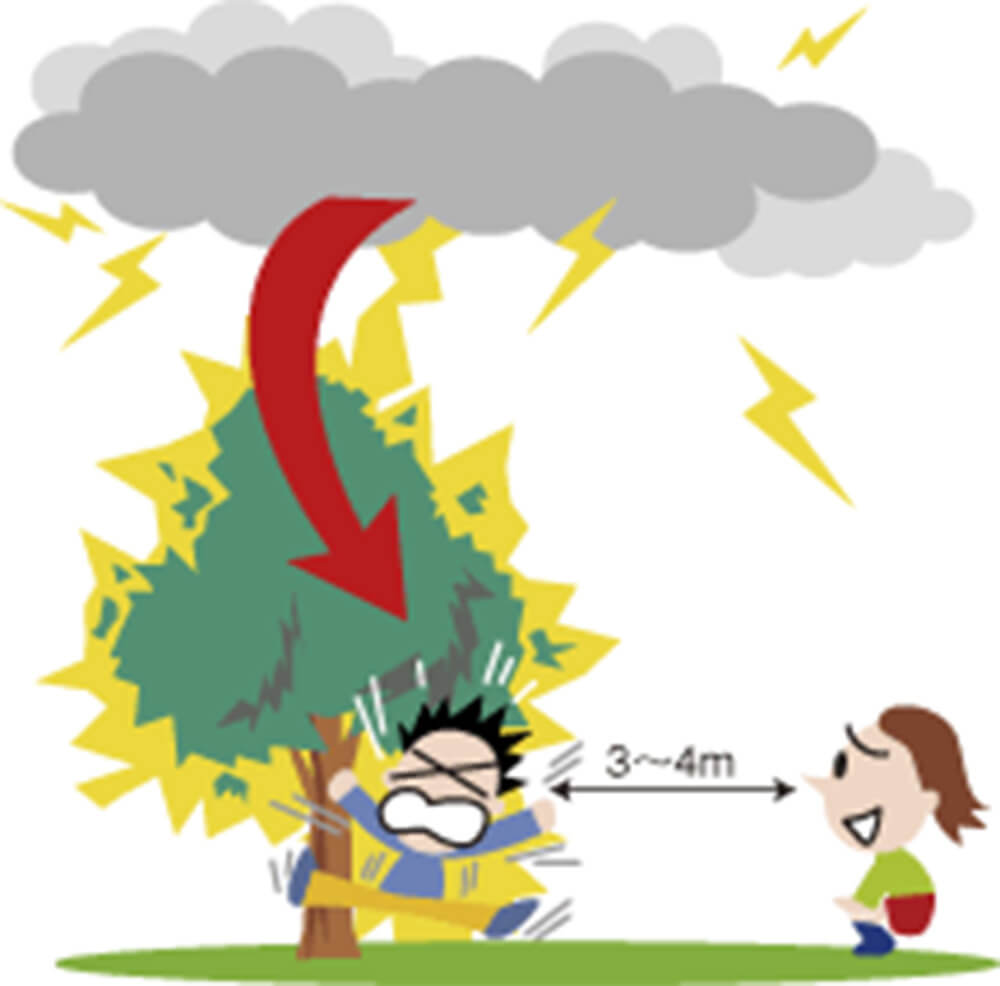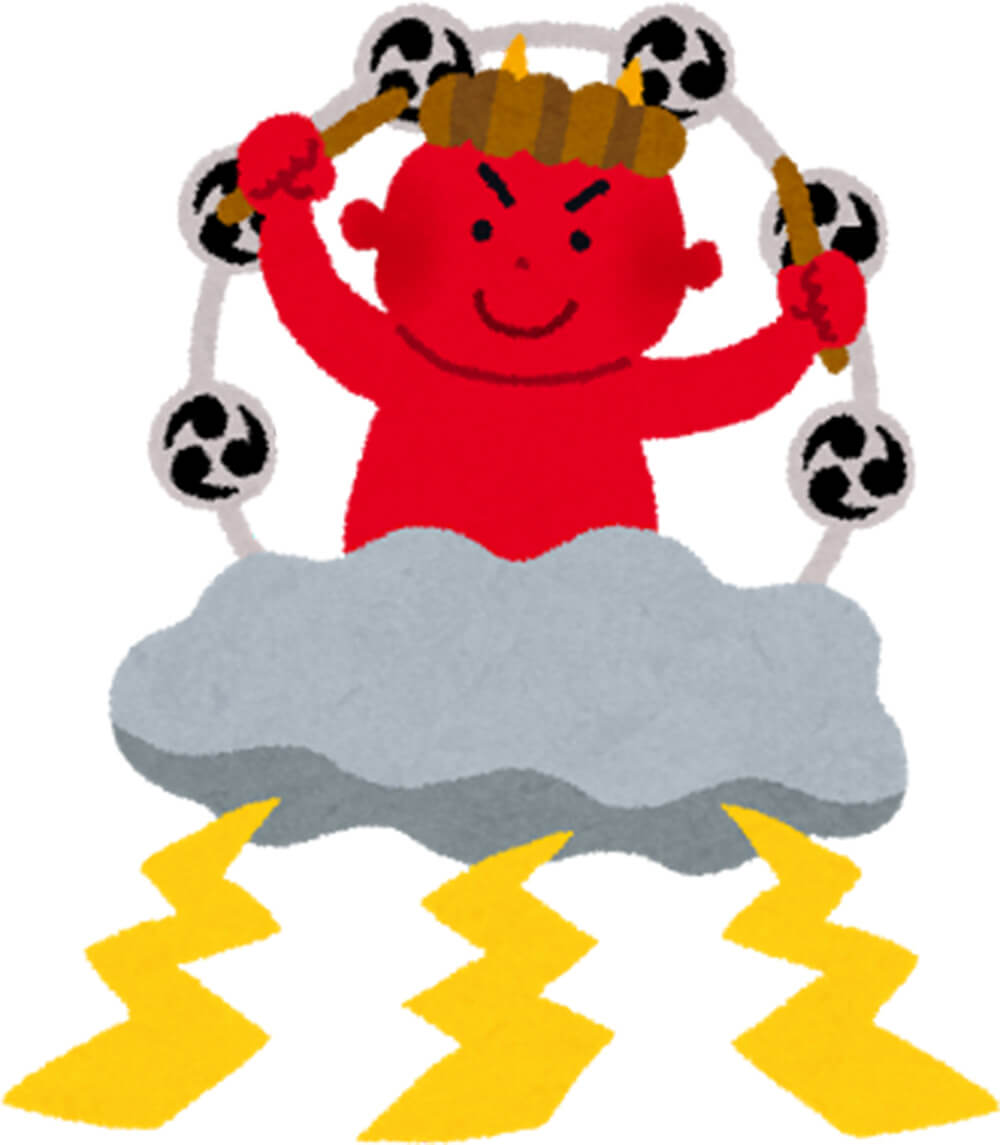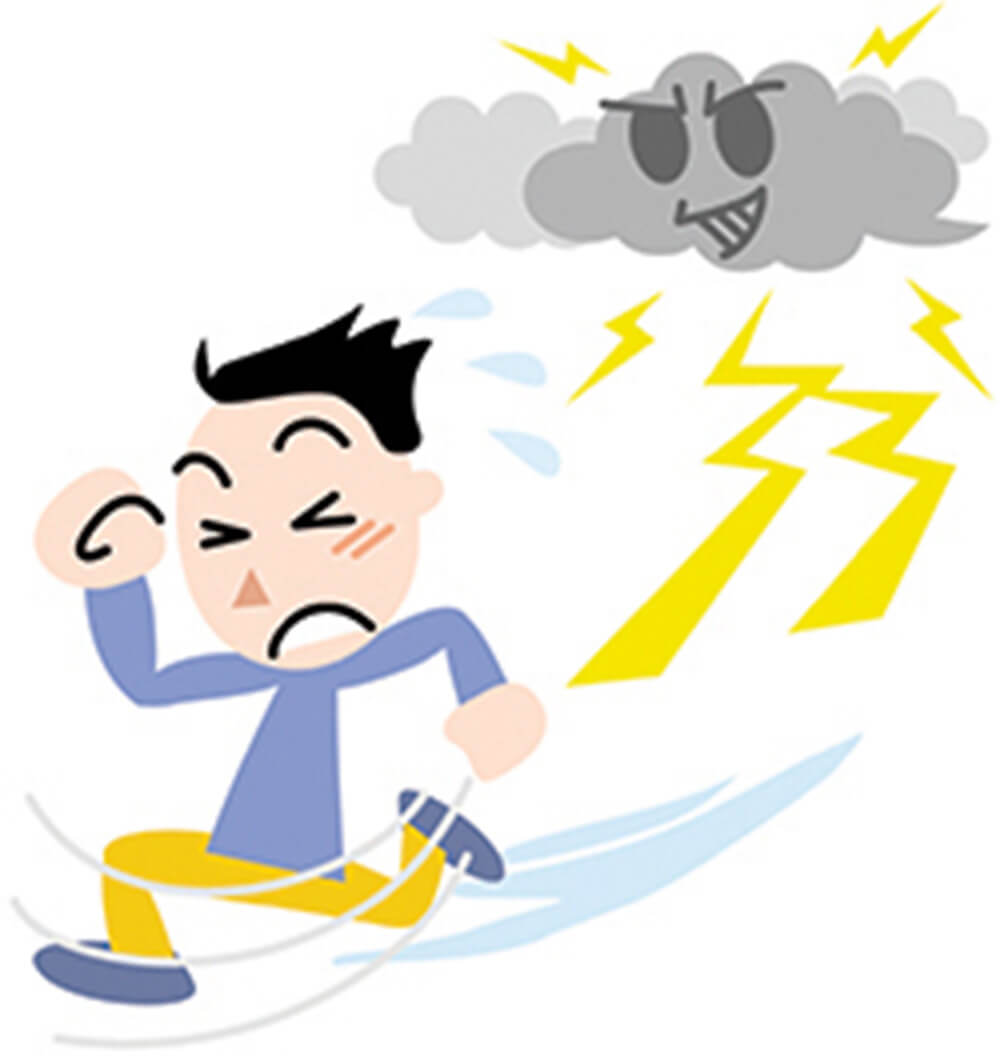Basically, lightning tends to strike high places. Even if you are wearing small metal objects such as precious metal accessories, glasses, watches, etc., the risk of lightning striking is the same as if you were not wearing them. In particular, lightning is more likely to strike on the rooftops of buildings, mountain tops, and grounds where there are no tall objects around. In addition, swinging a golf club on an empty golf course or holding a fishing rod in the ocean is very dangerous because you yourself become a lightning rod and guide the lightning.
If you hear the sound of lightning striking, or if there is any danger of lightning, evacuate to a building immediately. If you are in an open space where there are no buildings nearby, look for a place with a hollow (depression) and stay low. Even if there is no hollow, do not run under a tree, and if there is a tree nearby, stay at least 3 to 4 meters away from its trunk or branches.

Clicking on each item will take you to a page of frequently asked questions about lightning.

When you hear a rumble of thunder, it is a sign that thunderclouds are nearby. Thunderclouds are about 5 to 6 kilometers in diameter and move at speeds of 10 to 40 kilometers per hour, so even if you think you hear thunder in the distance, there is a chance that it will soon approach. Or you may already be under a thundercloud and lightning may strike nearby. If you hear thunder, evacuate to a safe place as soon as possible.
For example, if you hear a rumble 10 seconds after a flash of lightning, the distance to the lightning strike point is 340 m/sec (speed of sound) x 10 (seconds) = 3400 meters. The distance to the lightning strike point is 340 m/sec (speed of sound) x 10 (seconds) = 3400 m. It is not safe to say that the lightning is still more than 3 km away.
